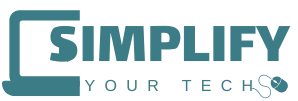Welcome to Tech Tips With The Tech Ninja!

Automation is Your Secret Superpower
“Having systems and using automations is the only way you can sustainably grow a business.” ~ Kat Milner
Introduction:
As a coach, your primary goal is to help your clients achieve their fullest potential. You spend hours guiding them, crafting personalized strategies, and providing the emotional support they need to succeed. However, the behind-the-scenes work—managing schedules, sending reminders, processing payments, and handling marketing—can be overwhelming.
This administrative load not only eats into your valuable time but also distracts you from what truly matters: your clients.
That’s where the power of automation comes in. Automation can become your superpower, allowing you to streamline your operations, reduce stress, and focus more on coaching.
We're going to explore how embracing automation can transform your coaching practice and give you back the time you need to grow your business and enrich your own life.
Automation refers to the use of technology to perform tasks with minimal involvement for you. In a coaching context, it means setting up systems that handle routine tasks automatically, such as sending appointment reminders, tracking client progress, managing social media posts, or even following up on leads.
With automation, you can eliminate repetitive tasks that consume time and energy, freeing you up to focus on your coaching sessions and personal well-being.
You might wonder, "Do I really need automation in my practice?" The answer is a resounding yes! Here are a few reasons why:
1. Time Efficiency
Time is one of your most valuable resources as a coach. Every hour you spend on administrative tasks is an hour that could have been used to prepare for a client session, develop new coaching programs, investing in your personal growth, or just doing something you enjoy.
Automation can save you hours each week by handling tasks that would otherwise demand your constant attention.
2. Improved Client Experience
Your clients come to you for guidance, not to get lost in a sea of missed appointments or late responses.
Automation ensures that clients receive timely communications, consistent follow-ups, and a seamless experience from start to finish.
This not only improves client satisfaction but also enhances your professional reputation.
3. Reduced Stress
Juggling multiple tasks can lead to burnout. When you automate your routine processes, you reduce the load on yourself, lowering stress levels.
This allows you to show up as your best self for your clients, energized and ready to help them succeed.
4. Scalability
As your coaching practice grows, so does the demand on your time. Automation allows you to scale your business without overwhelming yourself with extra work.
You can handle more clients and expand your services without compromising on the quality of your coaching.
How Automation Can Transform Your Coaching Practice
Now that we've discussed the importance of automation, let's dive into specific ways it can revolutionize your practice.
1. Automating Client Onboarding
Client onboarding can be a time-consuming process, involving sending welcome emails, sharing intake forms, setting up initial consultations, and more.
By automating this process, you can ensure that every new client receives the same warm welcome without manually handling each step.
Example: When a new client signs up for a coaching package, an automated system can send them a welcome email with a link to a form that collects their information. Once they submit the form, the system can automatically schedule their first session and send them a calendar invite.
2. Streamlining Scheduling and Reminders
Managing appointments manually can lead to double bookings, missed sessions, or last-minute cancellations. Having an automated scheduler allows clients to book sessions at their convenience based on your availability. You can also send automated reminders to reduce no-shows.
Example: A client books a session through your automated scheduling system. Two days before the session, the system sends a reminder email or text. If the client needs to reschedule, they can do so directly through the platform without you having to intervene.
3. Automating Payments and Invoicing
Handling payments and invoices can be a tedious task that distracts from coaching. Automation tools like PayPal or Stripe can be integrated into your booking system to process payments automatically when a session is booked. You can also integrate tools like QuickBooks to automate invoicing and financial tracking.
Example: When a client is on a monthly payment plan, an automated system generates an invoice and sends it to the client every month. Once the payment is received, the system automatically marks the invoice as paid and updates your financial records.
4. Enhancing Client Follow-Ups
Follow-ups are crucial for maintaining client relationships and ensuring accountability. Automated email sequences can keep your clients engaged between sessions, reminding them of their goals and providing additional resources.
Example: After a session, your system sends a follow-up email to the client, checking in on their progress and offering helpful tips. If the client doesn't respond, the system sends another email a few days later to keep them on track.
5. Automating Social Media Management
As a coach, maintaining a strong online presence is essential for attracting new clients and staying connected with your audience. However, managing social media can be time-consuming. Having a social media scheduler allows you to schedule posts in advance, automate content sharing, and track engagement—all without you needing to log in multiple times a day.
Example: You create a month's worth of social media content in one sitting and schedule it using your scheduling tool. The system then posts the content at optimal times, ensuring your online presence remains active while you focus on coaching.
Overcoming the Fear of Automation
It's natural to feel a little hesitant about introducing automation into your practice, especially if you're not particularly tech-savvy. However, embracing automation doesn't mean losing the personal touch that makes your coaching unique. Instead, it enhances your ability to deliver personalized, high-quality services by freeing up your time and energy.
I remember when I first started learning about automation - it terrified me! Then I jumped in and started setting up a few simple automations - and now I love it! It's actually FUN!
Here are a couple of tips to help you overcome any fears or reservations about automation:
1. Start Small
Begin by automating one or two tasks that take up a significant portion of your time, such as scheduling or invoicing. As you become more comfortable, you can gradually expand to other areas.
2. Focus on the Benefits
Remember that automation is a tool to help you, not replace you. By automating routine tasks, you gain more time to focus on what matters most—your clients and your well-being.
Real-Life Success Stories: Coaches Thriving with Automation
To illustrate the power of automation, here are a couple of real-life examples of coaches who have successfully integrated automation into their practices:
Rachelle, Farming Coach: “Before Simplify Your Tech, I wanted to post something broadly and used the SYT platform to post in 3 social media places at once. It was SO easy!”
Richa, Diversity Coach: "The automation features have been a game-changer for me. I can focus on coaching, knowing that all the little details are taken care of."
The Future of Your Coaching Practice with Automation
Automation is more than just a time-saver—it's a tool that can transform the way you work, enabling you to scale your business and provide even better service to your clients. By automating routine tasks, you can focus on what you do best: coaching, inspiring, and empowering others to achieve their goals.
Imagine having more time to develop new coaching strategies, pursue continuing education, or simply enjoy a well-deserved break, all while knowing that your business is running smoothly in the background.
Automation makes this possible.
Incorporating automation into your coaching practice isn't just about efficiency—it's about empowerment. By leveraging automation, you reclaim your time, reduce stress, and enhance the overall client experience.
This powerful tool allows you to focus on what truly matters: helping your clients transform their lives.
So take the leap and embrace automation as your superpower. Your clients will thank you, and you'll find yourself with more time and energy to continue growing as a coach and as a person.

